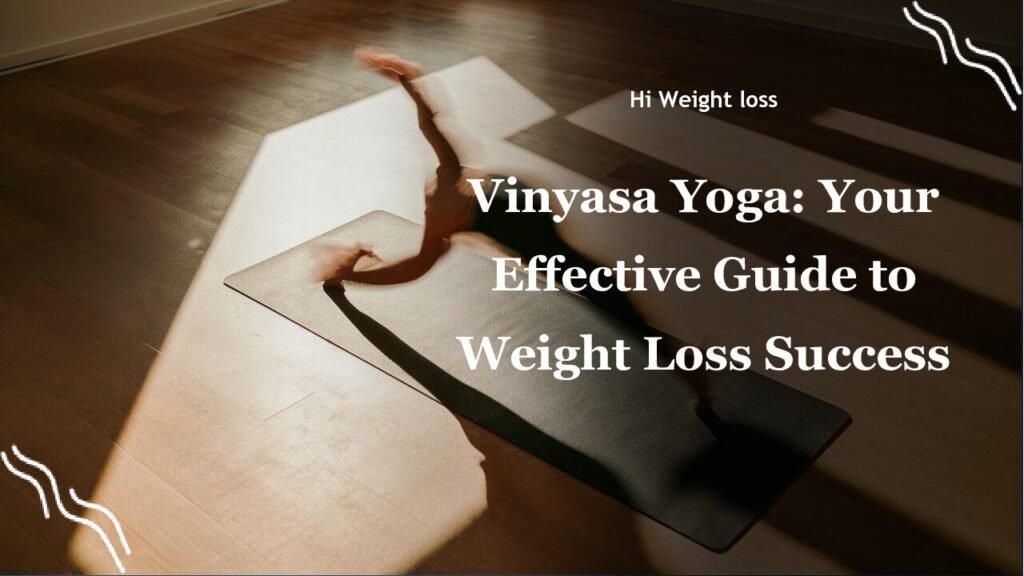“`
Ever found yourself wondering, “Can I do yoga on an empty stomach?” It’s a question many of us have pondered, especially when trying to fit in a morning session before the day takes over. It’s true that the idea of a lighter, more flexible body during yoga sounds enticing, but you might also be a bit worried about dizziness or lack of energy. This article will delve into the pros and cons of practicing yoga on an empty stomach, offering insights, tips, and advice to help you make the best choice for your body.
The Empty Stomach Yoga Debate: Is It Right for You?
Whether you’re a seasoned yogi or just starting your journey, the question of whether to practice yoga on an empty stomach is a common one. I remember when I first started yoga, I was so eager to get on the mat that I often skipped breakfast. Sometimes, I felt amazing, light and energized; other times, I felt shaky and weak. This inconsistency led me down a rabbit hole of research, personal experimentation, and lots of discussions with my fellow yoga enthusiasts. Let’s explore the benefits and drawbacks to help you make the right choice for your practice.
Potential Benefits of Practicing Yoga on an Empty Stomach
There are several reasons why some people swear by practicing yoga on an empty stomach. These advantages often relate to improved digestion and a more flexible practice.
One of the key benefits is improved digestion. When you practice yoga on an empty stomach, you’re not dealing with a full belly that might feel uncomfortable during certain poses. This can stimulate your digestive organs, and promote a smoother digestive process. Some people report feeling less bloated and more comfortable after their yoga practice when done before eating.
Another advantage is the potential for deeper stretches. With your stomach empty, you may find it easier to get into more complex stretches and twists. This added flexibility can enhance your overall yoga experience, letting you go a little deeper into poses and feeling more connected to your body.
There’s also the idea that exercising on an empty stomach could lead to increased fat burning. While the research is mixed, some studies suggest that your body may burn more fat when you exercise without having eaten. However, this effect can vary widely from person to person, so it’s important to listen to your body.

Potential Drawbacks of Practicing Yoga on an Empty Stomach
While there are some compelling benefits to practicing yoga on an empty stomach, there are also potential downsides that shouldn’t be ignored. These risks range from mild discomfort to more serious concerns.
One of the most common issues is dizziness and lightheadedness. If you’re practicing on an empty stomach, especially if your blood sugar is low, you might feel lightheaded, dizzy, or even shaky. This is particularly true during poses like standing balances, inversions, and flow sequences that require a lot of energy and stability. I remember one morning feeling so lightheaded during a headstand that I had to come down immediately to avoid falling.
Another significant risk is an increased risk of injury. Without proper fuel, your muscles, ligaments, and tendons may be weaker and stiffer. This can make it more difficult to maintain proper form, increasing the likelihood of straining or injuring yourself. Proper form becomes paramount, and without the necessary energy, it’s hard to achieve.
Additionally, practicing on an empty stomach can sometimes aggravate heartburn. Certain yoga poses, like twists and forward folds, can put pressure on your stomach. If your stomach is empty, these poses can sometimes cause or worsen heartburn. I’ve spoken with friends who’ve had to cut short their practice due to sudden heartburn flare-ups when they practiced without eating.
Recommendations for Safe Practice
So, what’s the best way to decide whether to do yoga on an empty stomach? Here are a few recommendations to help you practice safely and comfortably.
If you’re a beginner, it’s generally recommended to eat a light snack 30-60 minutes before your practice. This can help prevent dizziness, ensure proper form, and provide you with the energy you need to move safely. A small piece of fruit or a handful of nuts is often enough to provide a gentle energy boost.
For more advanced practitioners, you might want to experiment with fasting, but listen to your body. If you feel weak or lightheaded, don’t hesitate to eat something. It’s always better to fuel your body with the needed energy so that you can have a safe and fruitful practice.
If you have specific health conditions such as diabetes, hypoglycemia, or other blood sugar issues, it’s typically best to eat before practicing yoga. This can help you avoid symptoms like shakiness, anxiety, and confusion. I have a friend who experiences anxiety, and if she doesn’t eat before yoga, she will likely experience these symptoms, greatly impacting her experience of the practice.
Specific Scenarios: Yoga Styles and Conditions
The decision to practice yoga on an empty stomach can also depend on the specific style of yoga and your own health conditions. Let’s look at some specific scenarios.
Yoga Styles
**Restorative Yoga:** If you’re doing a gentle restorative yoga session, you might be able to practice on an empty stomach more easily, as it doesn’t require as much energy. Preparing for restorative yoga on an empty stomach can be simple; just listen to your body, and stop if you feel any discomfort.
**Hot Yoga:** Hot yoga can be particularly challenging on an empty stomach due to the increased risk of dehydration and dizziness. It is recommended you prepare for hot yoga by eating a small meal a couple of hours before practicing. If you are doing hot yoga with injuries, it’s even more critical to eat before, to help prevent further harm. You must also stay well hydrated to prevent fatigue and possible injury.
**Vinyasa Flow:** This style involves more vigorous movement, and you may find it easier to get through the flow with some fuel in your body. Preparing for vinyasa flow yoga can be as simple as eating a small snack before you start the practice. You also need to be aware of the potential for muscle soreness during and after the practice, especially if you are doing vinyasa flow yoga with injuries.
**Yin Yoga:** Yin yoga involves longer held poses which can be done well on an empty stomach for some people, especially if it improves your flexibility during practice. But it is always a good idea to understand how to prepare for yin yoga, especially with injuries, to avoid causing further damage.
**Kundalini Yoga:** This is an energetic practice, and requires more internal energy. Therefore it is recommended that you consider eating a little something before starting a kundalini session, and it is important to know how to prepare for kundalini yoga on an empty stomach, especially if you have pre existing injuries.
**Hatha Yoga:** This is a classical approach, and you may also do this on an empty stomach. Preparing for hatha yoga can also be simple, listen to your body, and eat something if you feel unwell. Pay attention to any existing injuries or discomfort that may occur when you practice hatha on an empty stomach.
**Power Yoga:** This intense, strength-based style is not ideal on an empty stomach, because it requires a lot of energy. Preparing for power yoga on an empty stomach is usually not a great idea, especially if you have injuries.
Health Conditions
**Diabetes:** If you have diabetes, it’s especially important to be mindful of your blood sugar levels. You should always eat before practicing yoga to avoid low blood sugar (hypoglycemia), and this is even more crucial when doing restorative yoga, or hot yoga, with diabetes.
**Heartburn:** Heartburn is a common issue that can be aggravated by yoga. If you are prone to heartburn, you may want to avoid practicing on an empty stomach, especially if you are doing restorative yoga or hot yoga with heartburn. The best thing is to avoid any poses that cause discomfort, like forward folds.
**Injuries:** If you have any injuries, always make sure that you are eating enough to give your body the needed energy before practicing any form of yoga. Practicing restorative yoga or other styles with an injury on an empty stomach increases the risk of causing additional injury.
Tips for Practicing Yoga on an Empty Stomach Safely
If you decide to try practicing yoga on an empty stomach, here are some tips to help you do so safely:
- **Hydration is Key:** Drink plenty of water before, during, and after your yoga practice, especially if you practice hot yoga on an empty stomach.
- **Listen to Your Body:** Pay attention to how you feel. If you feel weak, dizzy, or nauseous, stop your practice. If you are nauseous during yoga on an empty stomach, stop immediately and have a small snack.
- **Start Slow:** Avoid intense poses and practices until you know how your body responds to yoga on an empty stomach. You may want to try a more gentle style of yoga first.
- **Know your Limits:** Stop if you feel like you are pushing too hard. It’s always better to have a shorter practice than to injure yourself. It is crucial to understand how to avoid muscle fatigue when practicing yoga on an empty stomach.
Here’s a table summarizing some key considerations:
| Factor | Empty Stomach | Light Snack Before |
|---|---|---|
| Digestion | Potential improvement | Less impact, but still beneficial |
| Stretching | Potentially deeper | Good stretch with support |
| Fat Burning | May be increased, research mixed | Less direct impact on fat burning |
| Dizziness | Higher risk | Lower risk |
| Injury Risk | Potentially increased | Lower risk, better form |
| Heartburn | May be aggravated | Less likely to be aggravated |
| Best For | Experienced practitioners | Beginners and sensitive individuals |
Conclusion
Ultimately, whether or not you can do yoga on an empty stomach depends on your body, your experience level, and the type of yoga you are practicing. While some might find benefits like improved digestion and deeper stretches, others may experience dizziness, increased injury risks, or aggravated heartburn. I’ve learned through trial and error that listening to my body is the best way to know if practicing on an empty stomach is right for me, and I encourage you to do the same. Remember, the goal is to enjoy your practice and feel good, so don’t hesitate to adjust your routine based on what works best for you. If you feel comfortable practicing on an empty stomach, great! If not, that’s perfectly fine as well. Yoga is about finding the right path for yourself.
Now it’s your turn! Try these recommendations and see how they work for your body. Share this article with your friends to help spread the awareness about safe and effective yoga practices.
FAQ
Is it safe to do yoga on an empty stomach?
It can be safe for some people, particularly those who are experienced and have no health conditions. However, beginners and those with health issues should be cautious.
What should I eat before yoga?
If you choose to eat before yoga, a light snack such as a small piece of fruit, a handful of nuts, or a few whole-grain crackers can be helpful.
How long should I wait after eating to do yoga?
Generally, wait 30-60 minutes after a light snack and 2-3 hours after a full meal before practicing yoga.
Can I practice yoga on an empty stomach with diabetes?
It’s not recommended. People with diabetes should eat before yoga to prevent low blood sugar.
How can I avoid dizziness when practicing yoga on an empty stomach?
Stay hydrated, start slow, and listen to your body. If you feel dizzy, stop your practice and have a light snack.
“`



